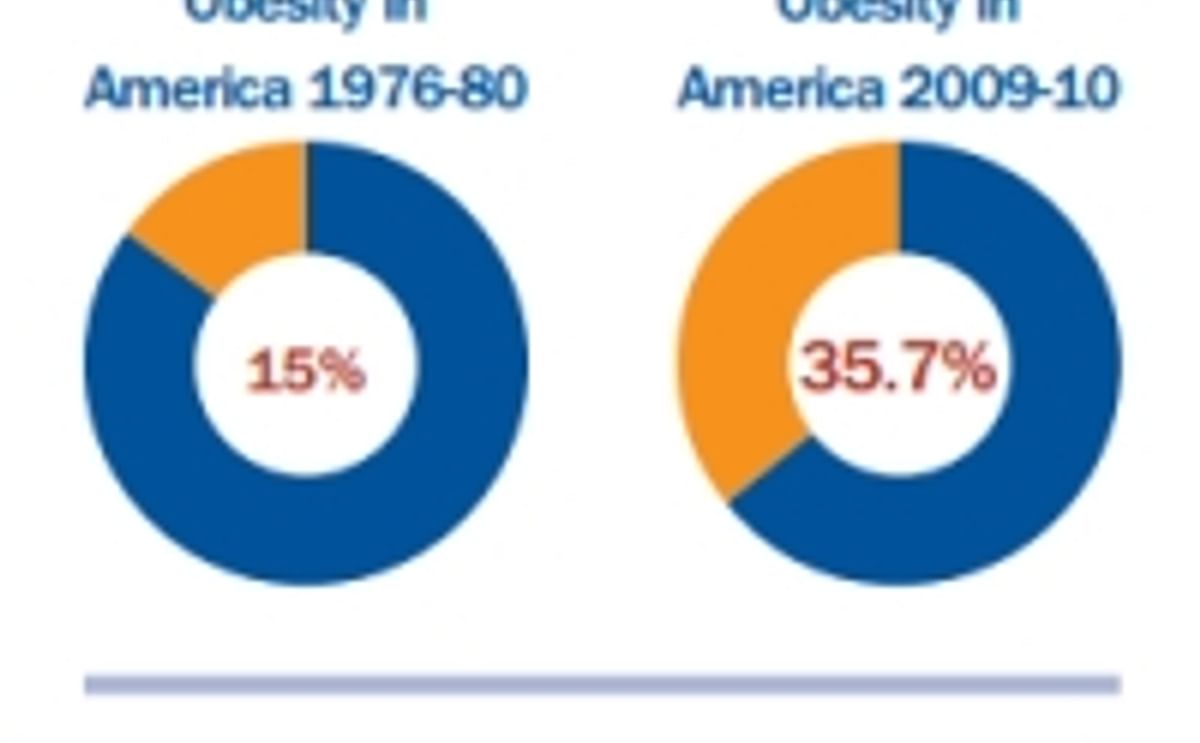Thirteen states now have adult obesity rates above 30 percent, 41 states have rates of at least 25 percent, and every state is above 20 percent, according to the report.
In 1980, no state was above 15 percent;in 1991, no state was above 20 percent;in 2000, no state was above 25 percent;and, in 2007, only Mississippi was above 30 percent.
Since 2005, there has been some evidence that the rate of increase has been slowing. In 2005, every state but one experienced an increase in obesity rates;in 2008, rates increased in 37 states;in 2010, rates increased in 28 states;and in 2011, rates increased in 16 states.*
“While stable rates of adult obesity may signal prevention efforts are starting to yield some results, the rates remain extremely high,” said Jeffrey Levi, PhD, executive director of TFAH. “Even if the nation holds steady at the current rates, Baby Boomers—who are aging into obesity-related illnesses—and the rapidly rising numbers of extremely obese Americans are already translating into a cost crisis for the healthcare system and Medicare.”
Levi added, “In order to decrease obesity and related costs, we must ensure that policies at every level support healthy choices, and we must focus investments on prevention.”
Read the full report: F as in Fat
Key findings from the 2013 F as in Fat report include:
- Rates vary by region. Of the states with the 20 highest adult obesity rates, only Pennsylvania is not in the South or Midwest. For the first time in eight years, Mississippi no longer has the highest rate—Louisiana at 34.7 percent is the highest, followed closely by Mississippi at 34.6 percent. Colorado had the lowest rate at 20.5 percent.
- Rates vary by age. Obesity rates for Baby Boomers (45-to 64-year-olds;45-64 Year Olds, includes most Baby Boomers, who range from 49-67 year olds) have reached 40 percent in two states (Alabama and Louisiana) and are 30 percent or higher in 41 states. By comparison, obesity rates for seniors (65+ years old) exceed 30 percent in only one state (Louisiana). Obesity rates for young adults (18-to 25-year-olds) are below 28 percent in every state.
- Rates by gender are now consistent. Ten years ago, there was nearly a 6 percentage point difference between rates for men and women (men: 27.5 percent, women: 33.4 percent), and now rates are nearly the same (men: 35.8 percent, women 35.5 percent). Men’s obesity rates have been climbing faster than women’s for this last decade.
- Rates of “extreme” obesity have grown dramatically. Rates of adult Americans with a body mass index (BMI) of 40 or higher have grown in the past 30 years from 1.4 percent to 6.3 percent—a 350 percent increase. Among children and teens (2-to 19-year-olds), more than 5.1 percent of males and 4.7 percent of females are now severely obese.
- Rates vary by education. More than 35 percent of adults ages 26 and older who did not graduate high school are obese, compared with 21.3 percent of those who graduated from college or technical college.
- Rates vary by income. More than 31 percent of adults ages 18 and older who earn less than $25,000 per year were obese, compared with 25.4 percent of those who earn at least $50,000 per year.
Source: Trust for America's Health









